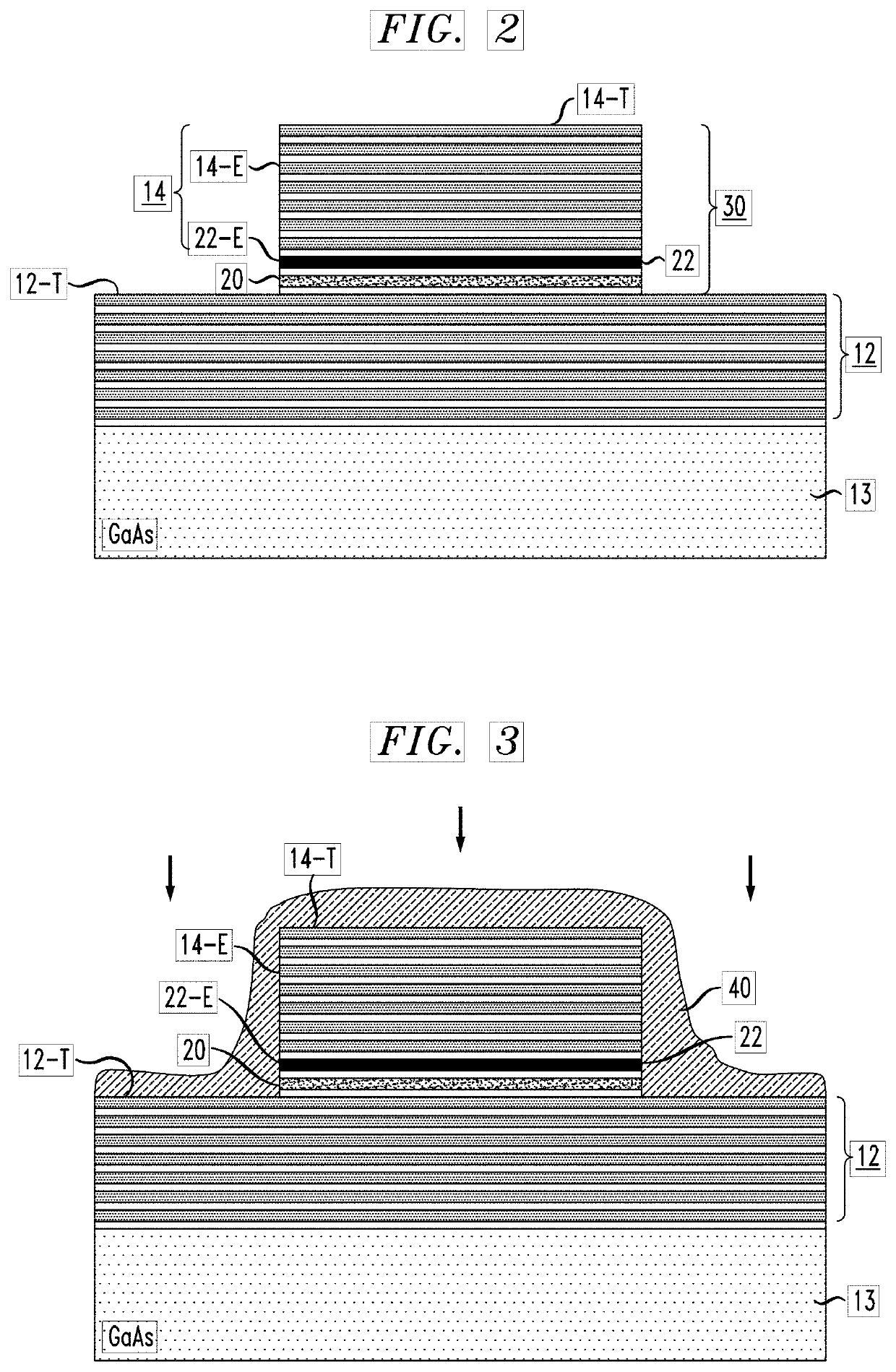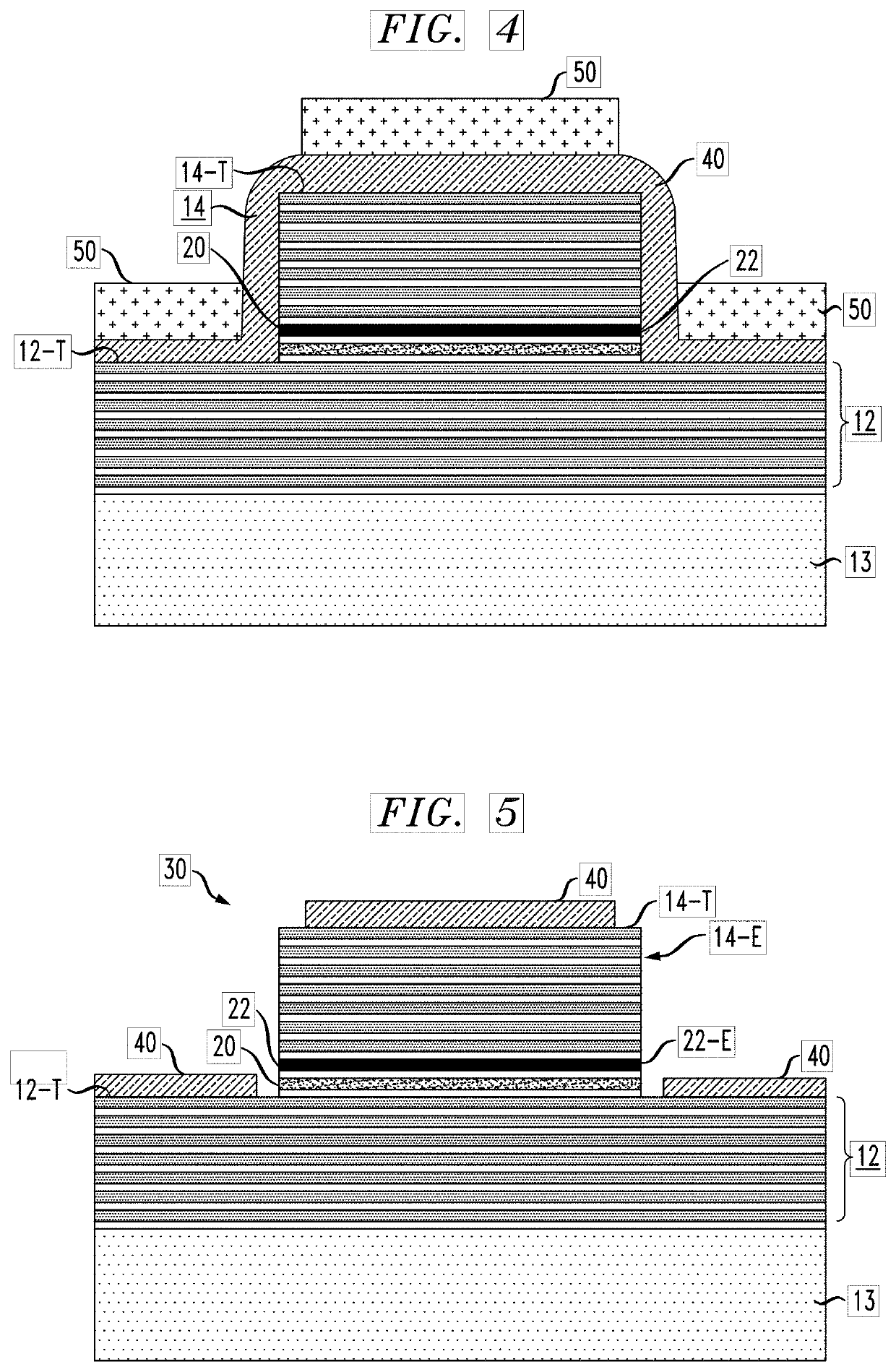Moisture control in oxide-confined vertical cavity surface-emitting lasers
- Summary
- Abstract
- Description
- Claims
- Application Information
AI Technical Summary
Benefits of technology
Problems solved by technology
Method used
Image
Examples
Embodiment Construction
[0020]Vertical cavity surface-emitting lasers (VCSELs) consist of a pair of distributed Bragg reflectors (DBRs) that function as the opposing mirror surfaces of a laser cavity, with the laser's active region and current-confining structure positioned between the pair of DBRs. An exemplary DBR is formed of relatively thin layers of alternating composition, one set of layers exhibiting a relatively high refractive index and the other set of layers exhibiting a relatively low refractive index so that the alternating arrangement of the two types of layers form the required reflective (mirror) structure. In a GaAs-based VCSEL device structure, the DBRs are formed of alternating layers of GaAs and AlGaAs.
[0021]FIG. 1 is a simplified cut-away view of a conventional prior art VCSEL 10, illustrating a first DBR 12 (grown on a GaAs substrate 13) and a second (opposing) DBR 14. As shown, second DBR 14 is formed to exhibit a mesa structure, allowing for top-side electrical contacts to be made t...
PUM
 Login to View More
Login to View More Abstract
Description
Claims
Application Information
 Login to View More
Login to View More - R&D
- Intellectual Property
- Life Sciences
- Materials
- Tech Scout
- Unparalleled Data Quality
- Higher Quality Content
- 60% Fewer Hallucinations
Browse by: Latest US Patents, China's latest patents, Technical Efficacy Thesaurus, Application Domain, Technology Topic, Popular Technical Reports.
© 2025 PatSnap. All rights reserved.Legal|Privacy policy|Modern Slavery Act Transparency Statement|Sitemap|About US| Contact US: help@patsnap.com



